A MOVEABLE FEAST
From padkos to le pique-nique

Padkos and swerfjaar are two almost untranslatable words from my mother tongue. But since I’m attempting a ‘swerving year’ on the road, I have more than enough time to think about food for the road.
Marita Van der Vyver’s column shifts gear as she goes on the road
I was delighted when a French friend mistranslated swerfjaar and wished me good luck for my intended “swerving year”. That’s it! I thought. I’m going to swerve right, left and centre and all over the place while wandering the world with my French partner in crime.
I’ve also dubbed it Our Year of Living Bravely, our Nomadland experience, or our geriatric gap year. Husband retired, last child left the house, house sold – all in quick succession – so we’re hitting the road with no fixed abode and no fixed itinerary. Travelling with the forgotten taste of freedom on our tongues while we decide where we want to settle down next.
And since we’re on the road, we need food for the road. Padkos, as my mother would have said. Pique–nique, as Alain calls it. Although I’ve tried to explain to him that the padkos of my South African youth is not at all the same thing as his French picnic. Both are supposed to be eaten outside – but that is where the resemblance ends.
The padkos of my childhood – hard-boiled eggs with a slightly blue tint like something slowly smothered to death, soggy tomato and cheese sandwiches, cold boerewors on a bed of congealed white fat – eaten at a cement table under a lonely blue gum tree right next to a road with huge trucks thundering past, surely doesn’t sound like an enticing meal. Yet I remember those meals, swallowed down with sweet black coffee from a flask, with great fondness.
Padkos represented freedom, movement, travelling, going on holiday, a reprieve from our everyday routine – in short, everything my yearning youthful heart desired.
Whereas the French word pique-nique always conjured up images of famous paintings. Bruegel the Elder’s tired Harvesters reclining under a tree, Matisse’s Luxe, Calme et Volupté (Luxury, Calm and Voluptuousness), Bellini’s Feast of the Gods, and – especially – Manet’s Déjeuner sur l’herbe (Luncheon on the Grass; see main image) with naked ladies cavorting and fully clothed men lolling about.
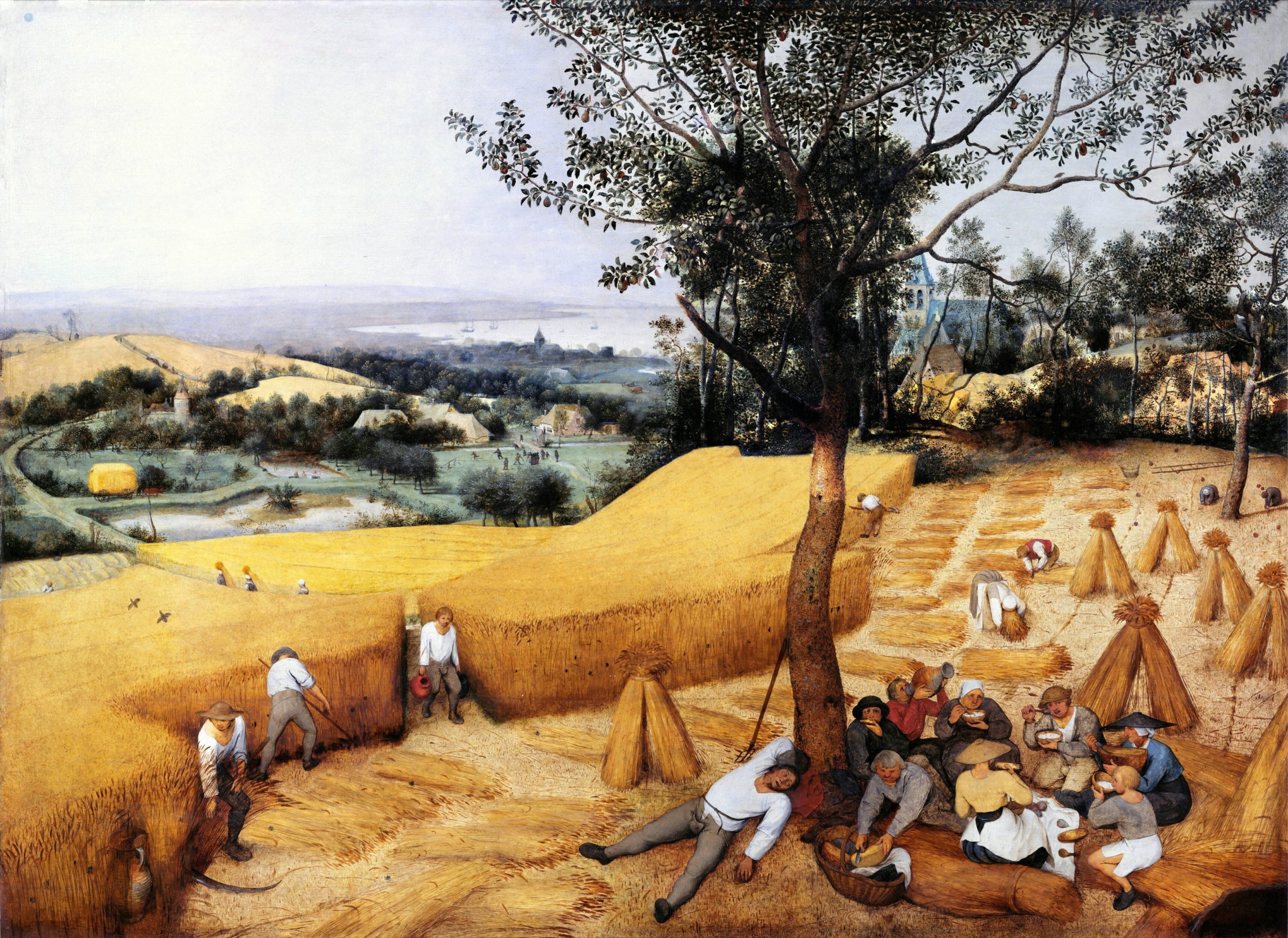
Pieter Bruegel the Elder’s Harvesters (1565). (Photo of artwork: Wikimedia Commons/ public domain)
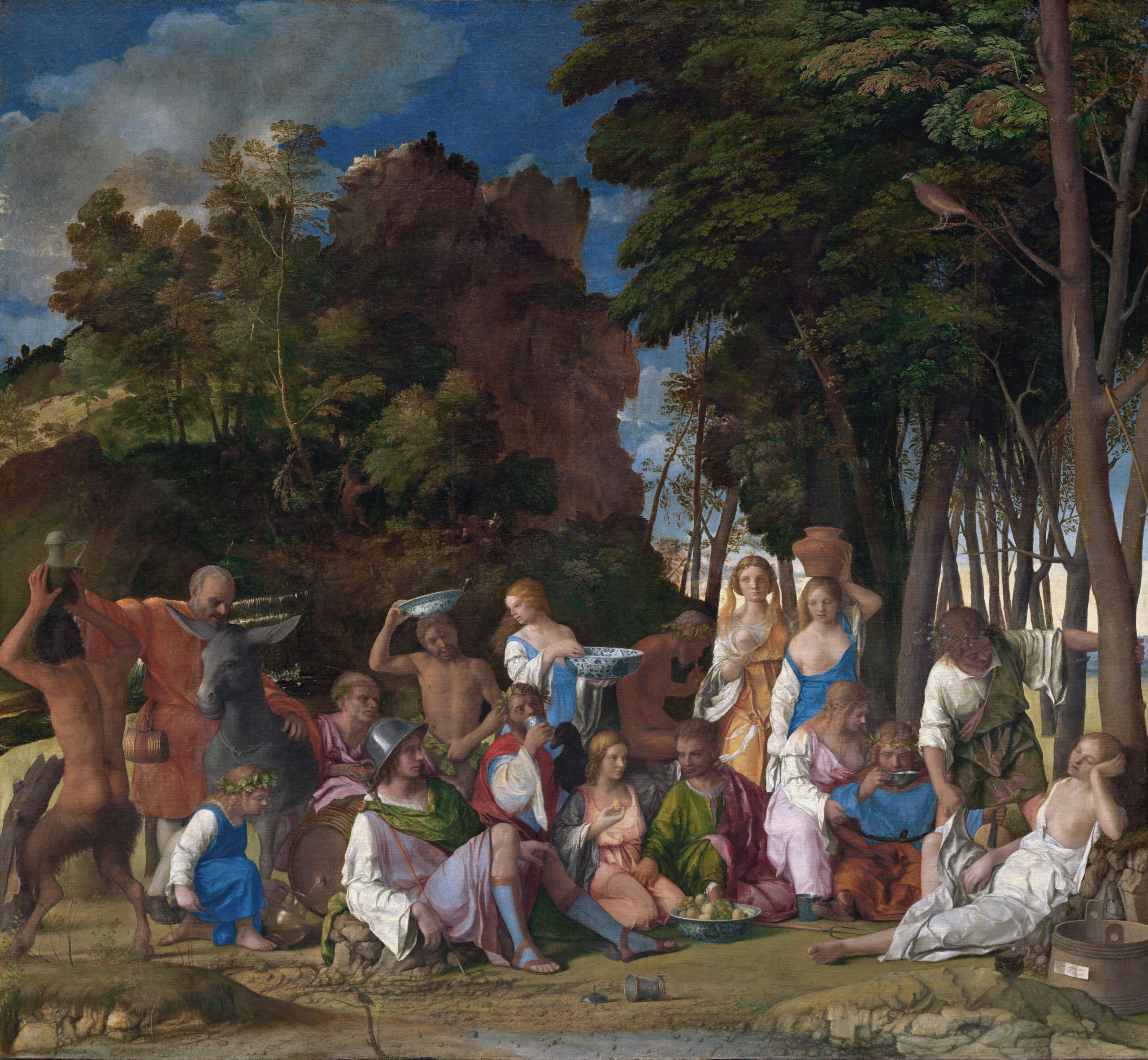
Giovanni Bellini’s Feast of the Gods (1514/1529). (Photo of artwork: Wikimedia Commons/ public domain)
Of course I didn’t really want naked picnics (at least not unless the men also took off their clothes), but I always loved the hedonistic atmosphere of this painting. The sylvan setting, the fruit tumbling from the basket, the bread on the blue blankets, the silver dish hiding who knows what delicious morsel. Or maybe it’s simply a glass dish for butter to spread on that beautiful bread. Manet didn’t paint the dish in detail, deliberately breaking with the artistic traditions of his time, leaving the scene looking unfinished in parts, keeping us guessing.
This was my romantic idea of a French picnic – until my children started going to French schools.
A few times a year the teacher would send a note asking parents to prepare a picnic for a school outing. I soon realised I was the only mother making sandwiches at home, choosing fresh baguettes from the baker and filling them with creamy Camembert or smoked ham.
What the other kids brought along as picnic food were packets of chips, store-bought biscuits, so-called energy bars tasting like American breakfast cereals, and maybe an apple or a banana. And kids being kids, mine wanted the same as the rest. Apparently a picnic without a packet of chips couldn’t possibly be called a pique–nique. So I surrendered and bought them chips and biscuits for their school picnics.
But when it comes to adult picnics, I still have my standards.
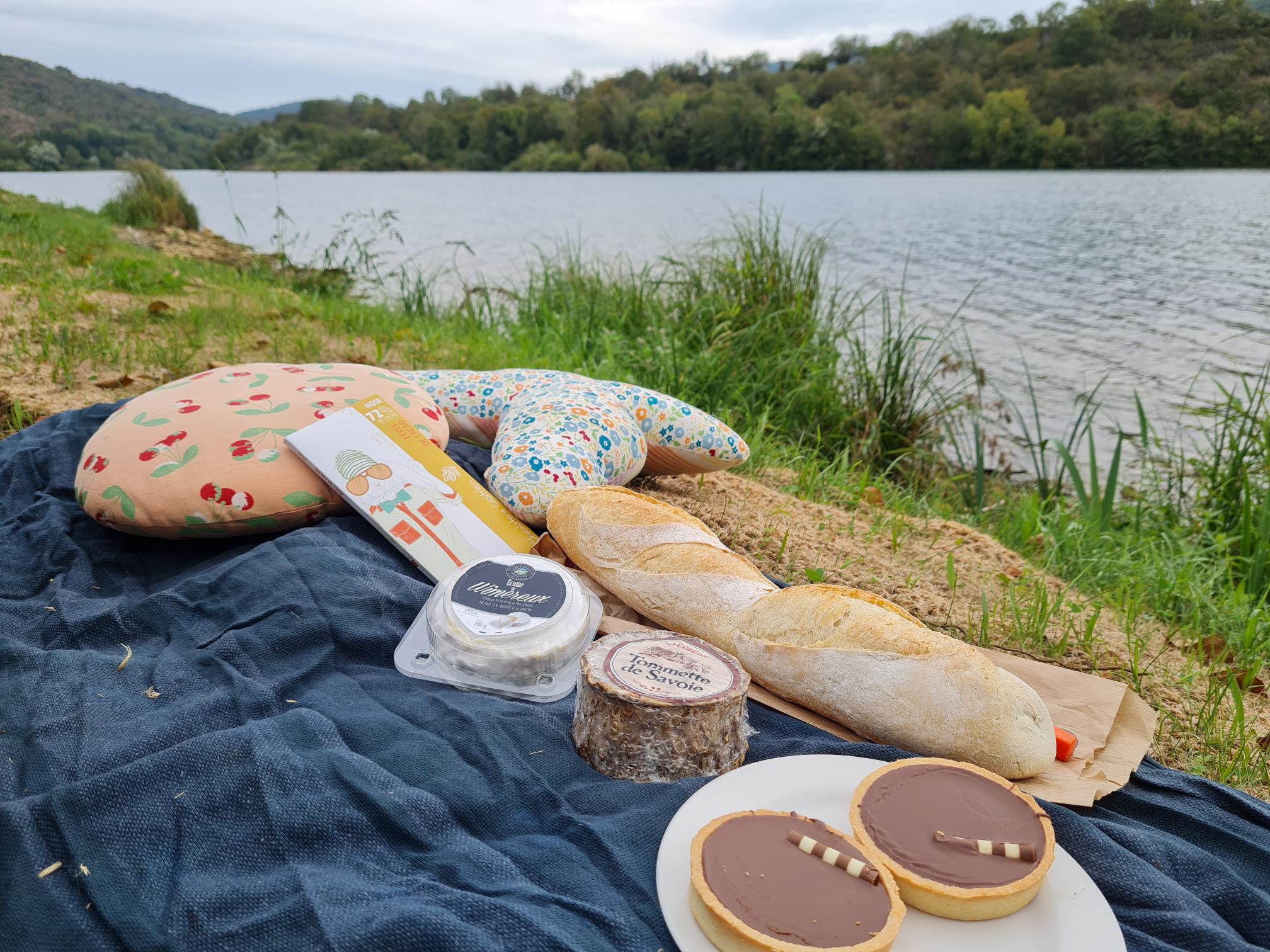
A fresh baguette, two cheeses and something sweet, enjoyed next to a lake accidentally discovered somewhere in the middle of France. (Photo: Marita van der Vyver)
I’ve detested disposable plates and styrofoam cups since long before environmental issues became the next big thing. It was simply a question of aesthetics. Porcelain or tin plates, stainless steel mugs, real cutlery evidently looked and felt better than disposable plastic ever could.
Therefore the most precious birthday present Alain ever gave me was an old-fashioned picnic basket, cloth-lined on the inside, with four plates and cups of white porcelain, four sets of cutlery, even wine glasses, all safely attached with little leather straps. I have used this for many picnics through the years, and now that we are “swerving” for the foreseeable future, the basket has pride of place on top of all the other baggage in the car, within easy reach for impromptu picnics on the road.
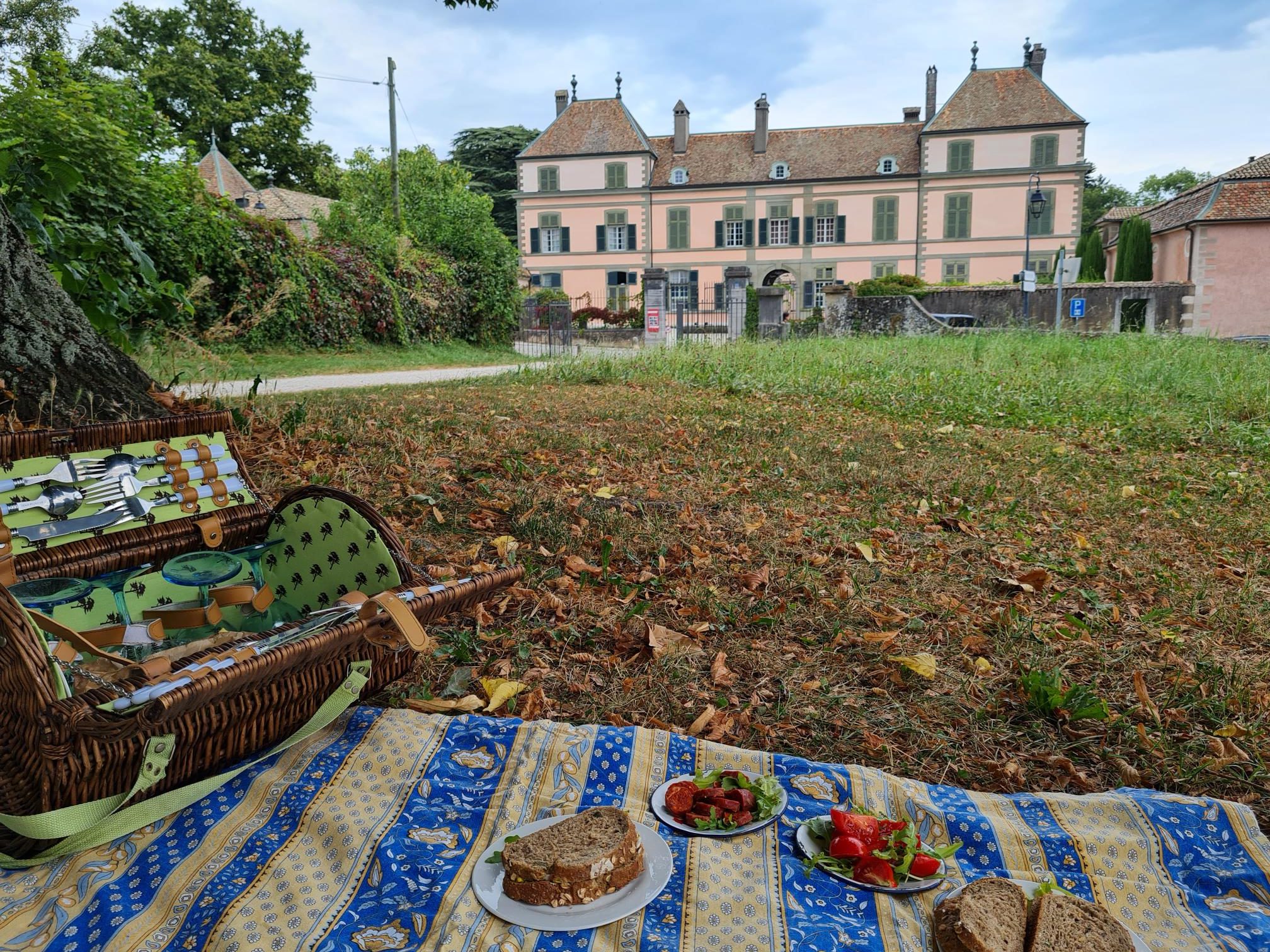
The well-used picnic basket and a simple picnic against the beautiful backdrop of Madame de Stael’s château in Coppet, Switzerland. (Photo: Marita van der Vyver)
My mental image of a perfect picnic – or my mood board, as my daughter would say – is still based on French paintings and descriptions of sumptuous outdoor feasts in Victorian novels. Of course I’ve learned to simplify my picnics, especially those enjoyed while travelling, because even though the journey matters as much as the arrival, we usually do have to arrive somewhere before dark.
Therefore a perfect traveller’s pique-nique should be a simple meal – a loaf of bread, a chunk of cheese, a few slices of ham or saucisson (dried sausage), a little salad or some fruit – as long as the bread is freshly baked, the cheese or ham preferably from the region where you have the picnic, the fruit or vegetables in season.
During our first weeks of “swerving” we’ve enjoyed some memorable picnics with these basic ingredients. In a park next to a castle in the Creuse region, with a local unpasteurised cheese known as Caillou Creusois or Pebble from the Creuse; behind a friend’s house in the Auvergne, with a round of St Nectaire cheese as big as a birthday cake and bright red tomatoes from her neighbour’s garden; another Auvergne picnic with a selection of heirloom tomatoes in various colours mixed in a salad that looked as glorious as it tasted.
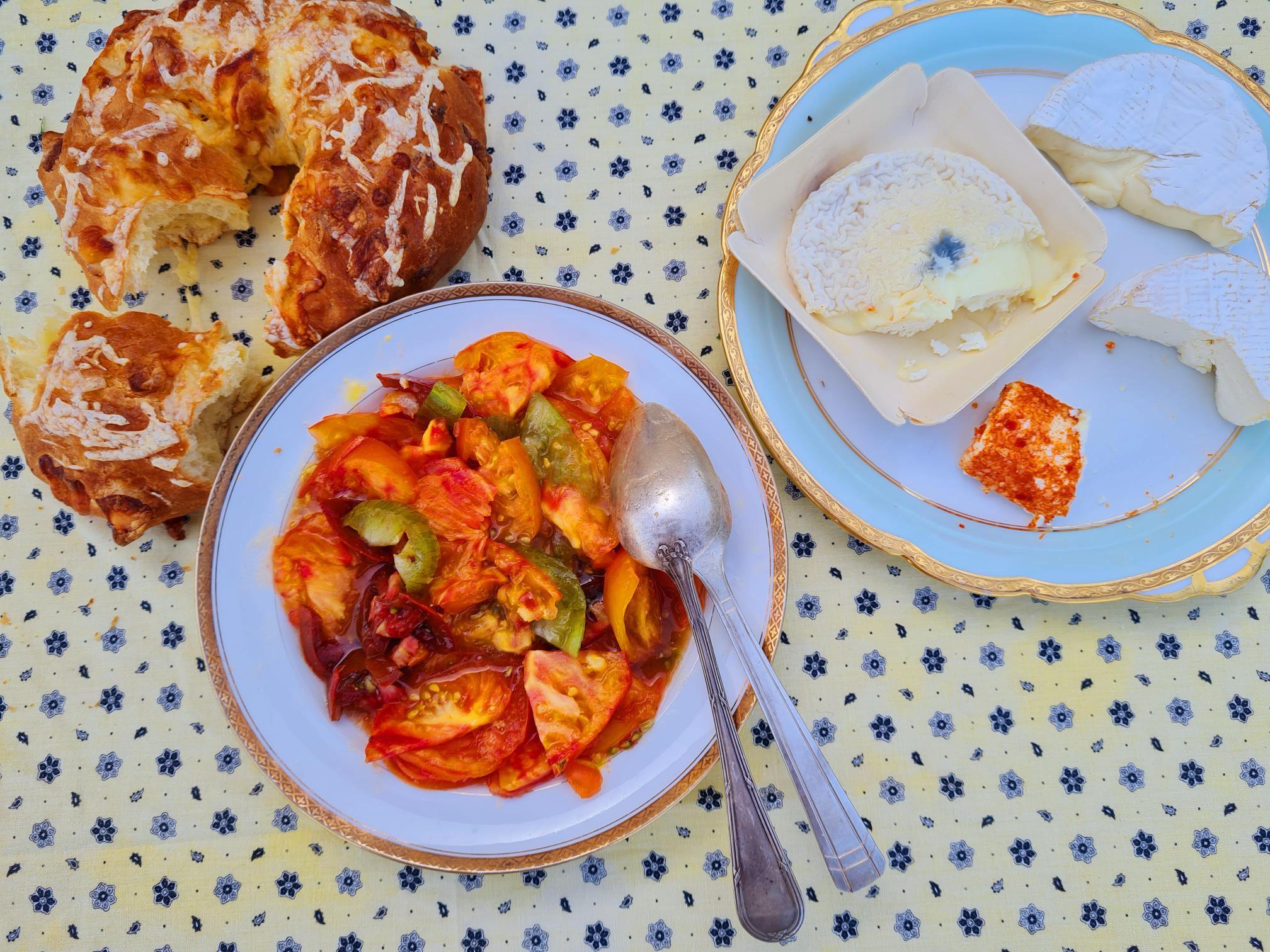
A salad of heirloom tomatoes in different colours with a selection of delicious cheeses. (Photo: Marita van der Vyver)
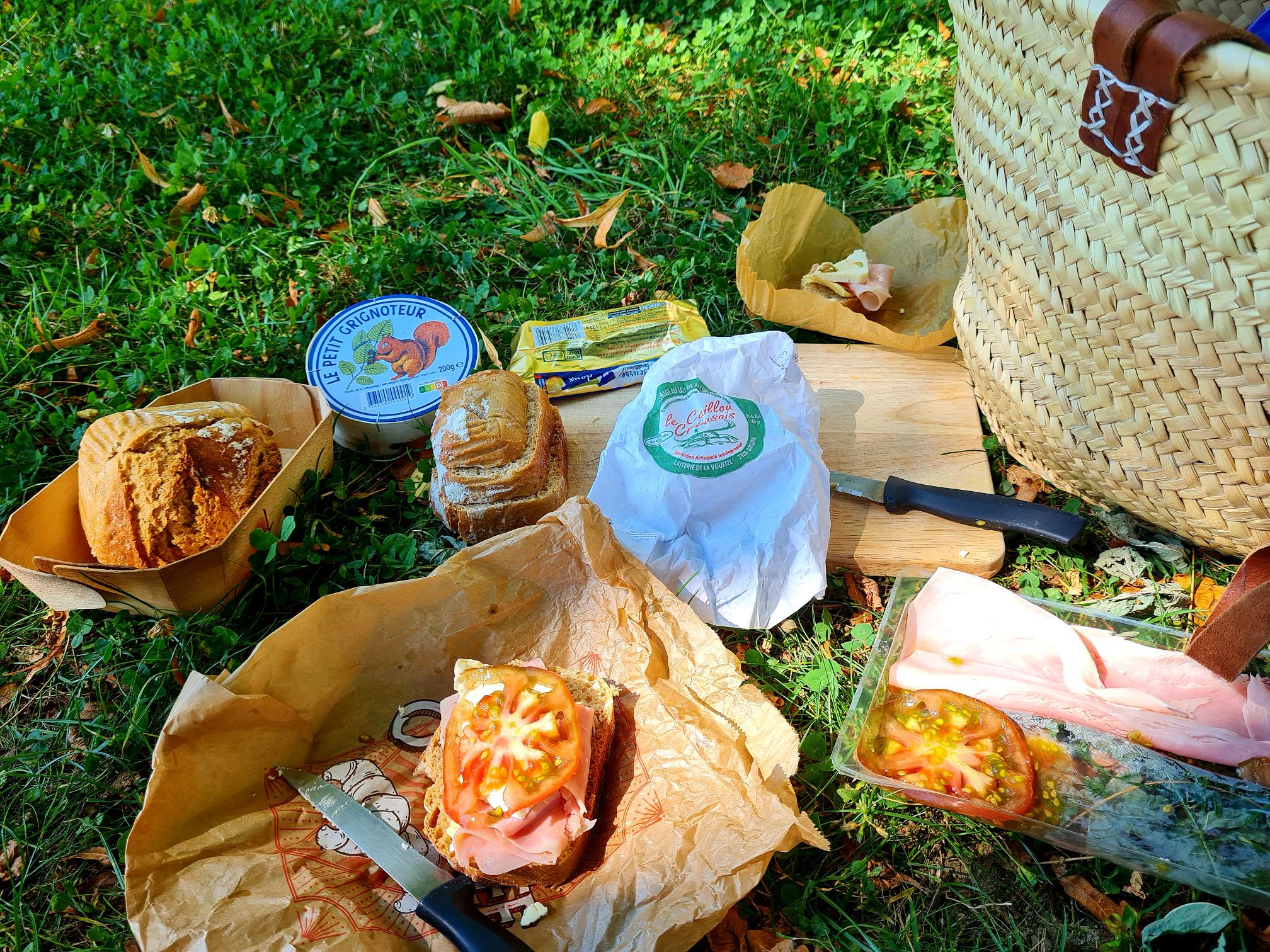
Improvised pique-nique (without plates or cutlery) in the Creuse region, with a local cheese called Pebble of the Creuse. (Photo: Marita van der Vyver)
Or a simple sandwich prepared beforehand and a perfectly boiled egg – no blue tint in sight – in the middle of a vineyard high above Lake Geneva in Switzerland. Or two cheeses from two different regions next to a small nameless lake accidentally discovered somewhere in the middle of France. One was an incredibly creamy Ecume de Wimereux from the north, with the texture of chocolate mousse, the other a tasty chunk of Tomme de Savoie.
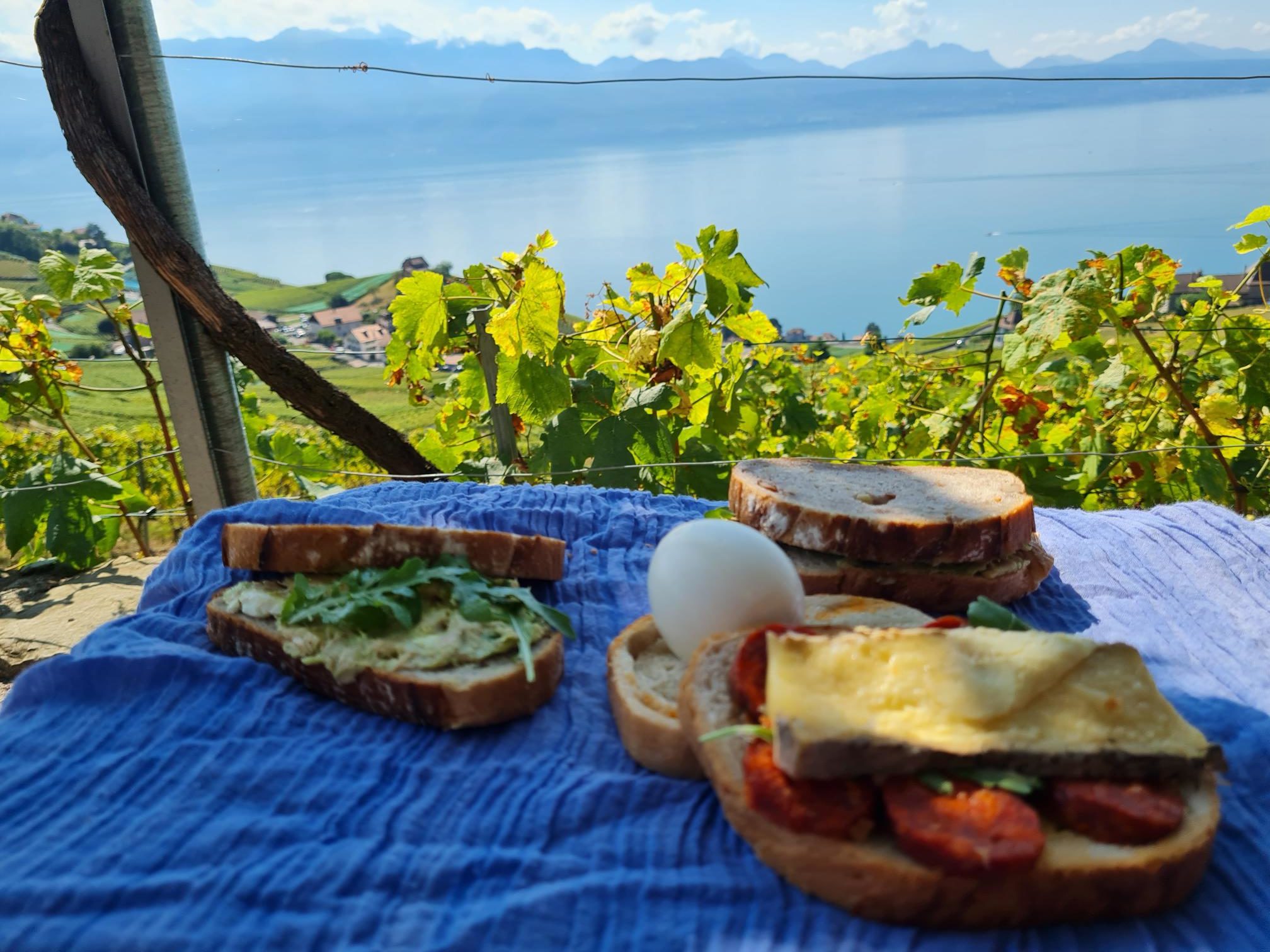
Home-made sandwiches and an egg boiled to perfection in a vineyard high above Lake Geneva, Switzerland. (Photo: Marita van der Vyver)
But the most important condition for a good picnic, I’ve realised again and again, is the setting, the setting, the setting. Not even the prettiest picnic basket containing the most delectable food can save a picnic in a dismal, depressing place. Think of all those famous paintings, I tell myself when I’m too lazy to drive the extra mile, to make a detour away from a busy road, to search a little further for a calm and quiet spot for a simple traveller’s picnic.
Picnics should be enjoyed as far away from road traffic as possible. If you absolutely have to eat next to a road, it’s worth remembering the poet Robert Frost’s words: Two roads diverged in a wood and I – I took the one less travelled by, and that has made all the difference.
Of course, sometimes the road is less travelled for a good reason, as Jerry Seinfeld quipped. It might lead you to a rubbish dump or an open-air toilet. But nine out of 10 times it will lead you to something better than the parking area of a service station next to a highway – which seems to be the modern French equivalent of all those desolate cement tables under blue gum trees where I used to eat padkos with my family when I was a child.
But who knows, all these French children stuffing down their pique-niques in noisy, crowded parking areas might grow up to recall their outdoor meals as fondly as I remember the padkos of my childhood. Most of us look at the past through rose-tinted glasses, blurring the sharp lines of reality a tad, choosing to forget the ugly bits.
Meanwhile I’ll continue trying to bridge the gap between padkos and pique-nique, between my mother tongue and my adopted language, between the blurry past and the sometimes too sharp present. Lank lewe padkos! Vive le pique-nique! DM/TGIFood
The author supports Ladles of Love, an NGO feeding the hungry and providing healthy food in Cape Town. You can support them here LadlesofLove.





 Become an Insider
Become an Insider
Comments - Please login in order to comment.